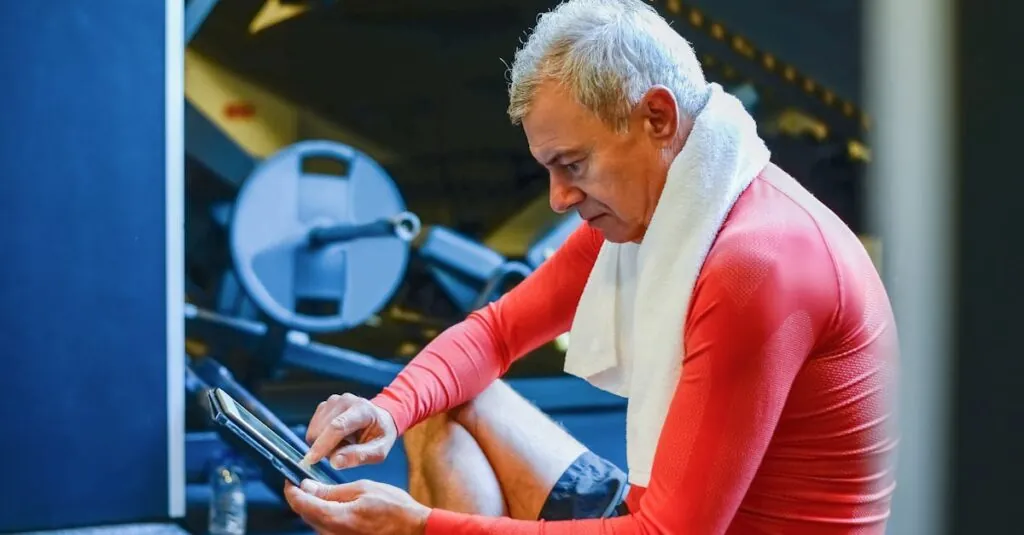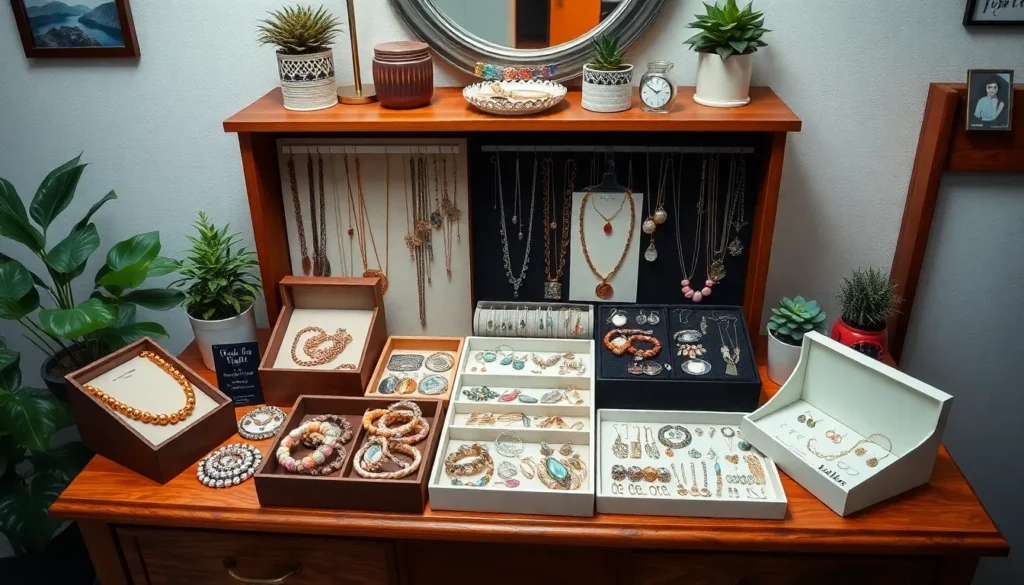Aging doesn’t have to mean slowing down. For many men, it’s a chance to embrace a new chapter filled with vigor and adventure. Active aging isn’t just a buzzword; it’s a lifestyle that encourages men to stay fit, engaged, and downright fabulous as they age. Picture this: a group of silver-haired gentlemen outpacing their younger counterparts on the hiking trail, laughing over a game of tennis, or mastering the art of yoga.
In a world that often emphasizes youth, active aging men are flipping the script and proving that age is just a number. With the right mindset and a sprinkle of humor, they’re redefining what it means to grow older. So grab your sneakers and a sense of humor—it’s time to discover how staying active can turn the golden years into the best years.
Understanding Active Aging Men
Active aging encompasses a lifestyle where older men prioritize vitality and engagement. It promotes physical activity, social interaction, and mental stimulation, showing that life can be fulfilling regardless of age.
Definition of Active Aging
Active aging refers to the process of optimizing opportunities for health, participation, and security to enhance quality of life as men age. The World Health Organization emphasizes that this approach enables men to remain physically, socially, and mentally active throughout their later years. Active aging encourages men to embrace challenges and pursue interests, ensuring they continue to experience joy and purpose during this life stage. This definition highlights that aging actively is not merely about longevity but also about living life to its fullest.
Importance of Physical Activity
Physical activity plays a crucial role in the lives of active aging men. Regular exercise can prevent chronic diseases, improve mood, and enhance cognitive function. Engaging in activities like walking, swimming, or strength training helps maintain muscle mass and flexibility, which are vital as men age. Evidence suggests that men who incorporate physical activity into their routines experience better overall health and a greater sense of well-being. Socially, participating in group exercises fosters connections, combating feelings of isolation and loneliness. Prioritizing physical activity positions men for vibrant, energetic lifestyles despite the challenges of aging.
Physical Health for Active Aging Men
Maintaining physical health is crucial for men embracing active aging. Engaging in regular exercise and following a balanced diet significantly impacts overall well-being.
Exercise Recommendations
Incorporate cardiovascular activities like walking, cycling, or swimming at least 150 minutes weekly. Strength training, targeting major muscle groups, should occur on two or more days each week. Activities like yoga enhance flexibility and balance, reducing the risk of falls. Consistency creates routines, making exercise enjoyable rather than a chore. Participating in group fitness classes fosters social connections, vital for mental health.
Nutrition Tips
Opt for a diet rich in fruits, vegetables, whole grains, lean proteins, and healthy fats. These food groups provide essential nutrients that support heart health, cognitive function, and muscle preservation. Staying hydrated is equally important; men should aim for at least 3.7 liters of fluids, including water, daily. Limiting processed foods and added sugars creates a positive impact on energy levels and overall health. Meal planning ensures balanced nutrition while creating awareness of portion sizes.
Mental and Emotional Well-Being
Mental and emotional well-being play crucial roles in active aging. Maintaining mental sharpness contributes to an enriched life, as cognitive engagement enhances overall quality of life.
Staying Mentally Active
Engaging in stimulating activities benefits mental agility. Puzzles, reading, and playing musical instruments challenge the brain and promote new neural connections. Regularly learning new skills, like a language or art, fosters lifelong growth. Joining clubs or classes encourages participation, providing opportunities for learning and connection. Using technology also supports mental engagement, as online platforms offer courses and social interactions. Integrating mindfulness practices, such as meditation or deep breathing, strengthens resilience and reduces stress.
Building Strong Social Connections
Social connections significantly influence emotional health. Maintaining friendships and family ties brings joy and a sense of belonging. Participating in community events exposes men to new circles and shared interests. Many organizations cater to active older adults, focusing on fitness or hobbies, promoting interaction. Regular phone calls or video chats with loved ones combat isolation, particularly during challenging times. Engaging in volunteer work also strengthens social ties, providing purpose and fulfillment while helping others.
Challenges Faced by Active Aging Men
Active aging men encounter various challenges that can affect their pursuit of vitality and engagement. Addressing these issues is crucial for maintaining an active lifestyle.
Common Health Issues
Men in this age group often face chronic health conditions that impact their overall well-being. Cardiovascular problems rank among the most prevalent, affecting physical stamina and energy. Diabetes also poses significant risks, leading to complications that compromise mobility. Joint pain and arthritis interfere with daily activities, limiting exercise options. Men frequently experience decreased muscle mass and strength with age, which can hinder physical performance. Mental health concerns like depression and anxiety may arise, affecting motivation. Recognizing these health challenges can empower men to seek appropriate interventions, enabling them to maintain an active lifestyle.
Overcoming Barriers to Activity
Barriers to maintaining an active lifestyle often stem from age-related misconceptions or physical limitations. Scheduling conflicts related to work, family, or social commitments can impede participation in physical activities. Fear of injury or embarrassment may deter men from trying new exercises or joining group sessions. Additionally, access to facilities or safe outdoor spaces can be limited. Prioritizing social support from friends, family, or community organizations proves essential for overcoming these obstacles. Seeking knowledge about suitable activities that align with personal preferences encourages proactive approaches to fitness. Developing a consistent routine makes it easier for men to stay active despite these challenges.
Success Stories of Active Aging Men
Numerous inspiring stories showcase men who embrace active aging. One such individual, Mark, took up hiking in his 60s. He discovered local trails and not only improved his fitness but also formed friendships with fellow hikers.
Another extraordinary man, Tom, combined his love for tennis with a commitment to health. At 70, he competes in senior leagues, enhancing his physical strength and mental agility. Regular matches provide social interaction and an outlet for stress relief.
Jim, aged 68, practices yoga at a community center. This discipline enhances his flexibility and balance, significantly reducing his fall risks. Engaging in yoga classes also fosters a sense of camaraderie among participants, enriching his social life.
Participation in community events is vital for active aging. Robert, who volunteers at a local food bank, finds purpose and connection through giving back. His work not only combats feelings of isolation but also promotes well-being.
David, 75, shares his passion for woodworking with younger generations. Teaching skills to local youth brings him joy and a sense of accomplishment. Intergenerational connections strengthen community ties and enhance emotional health.
Lastly, Paul, at 69, practices mindfulness meditation to reduce stress. His daily routine includes short sessions that help maintain mental clarity and resilience. Prioritizing mental well-being plays a crucial role in his approach to active aging.
These men exemplify how active aging leads to thriving lives filled with adventure, connection, and joy. Engaging in physical activities and community involvement significantly enhances overall quality of life for older men.
Active aging offers men a vibrant pathway to embrace their later years with enthusiasm and purpose. By prioritizing physical fitness mental stimulation and social connections they can redefine what it means to grow older. Engaging in diverse activities not only enhances health but also fosters a sense of community and belonging. The inspiring stories of men who thrive in their pursuits serve as a testament to the potential for a fulfilling life at any age. With the right mindset and support active aging can transform challenges into opportunities for growth and adventure.













